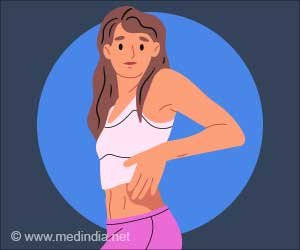Empowering Female Athletes With Healthy Habits and Positive Body Image

“False information is often perpetuated on social media by ‘fitness influencers’ who are not qualified to give health information,” say the authors who are based in the U.S. and New Zealand. “With the creation of Photoshop and other editing devices, the images portrayed by media are not realistic. Many teens cannot achieve this body type without using damaging restrictive eating. They feel the pressure to look ideal and subsequently, they feel they are never good enough when they do not duplicate the unrealistic bodies seen in the media.”
Top female competitors, including tennis champion Serena Williams, have spoken out about the significant pressure to maintain the ‘perfect’ physique. Earlier this year, heptathlete Anna Hall took to TikTok to criticize those who say
look like guys.
Spring Forward, published by CRC Press, features experiences from almost a dozen female athletes about how the push to be thin caused their battles with poor body image.
Advertisement
The women included in the book, ranging from swimmers to tennis players, recount horrifying incidents such as running 5 miles as self-punishment for eating a cookie, collapsing in the gym after 24 hours without food, and dieting extensively in response to criticism over her ‘butt cheeks.’
One volleyball player even lost a teammate – the team’s star player’ – to anorexia after the girl had a heart attack caused by the eating illness.
Body Type Expectations in Sports and the Negative Impact on Women’s Self-Image
Dr. Kathryn Vidlock and her co-authors emphasize how the situation is exacerbated by the fact that many sports have body type expectations. They claim that runners are assumed to be very slim, however, some elite runners have muscular legs that appear larger than the stereotype. As a result, women are frequently subjected to “derogatory remarks.”
Spring Forward: Promoting Healthy Eating Habits and Positive Body Image in Women’s Sports
Spring Forward fosters higher-quality performance in women’s sports through healthy food and exercise to counteract unreasonable expectations. The goal is to teach teenage and female athletes, as well as sports coaches and clubs, about body confidence.
According to the authors, this will safeguard children against unhealthy eating and fad diets like ketogenic, as well as other self-destructive behaviors in an attempt to fulfill unattainable expectations. It includes detailed instruction manuals on positive eating plans, the repercussions of disordered eating, such as not menstruating, and how parents can recognize warning signs.
SPRING: An Education Program for Improving Body Image Flexibility in Schools and Colleges
The writers have also created an education program for high schools called SPRING (Strength and Positivity Rooted in Nutrition for Girls), which is mentioned in the book. They are advocating for programs like SPRING to be offered in schools, colleges, and among adults to identify women at risk early.
SPRING aims to improve body image ‘flexibility,’ which the authors define as the ability to be confident in one’s own body regardless of size or shape. It consists of three one-hour sessions spread out throughout the athlete’s season.
According to data from the authors’ research, SPRING has resulted in an increase of more than 22% in body image flexibility among cheerleaders in Colorado schools.
Source: Medindia
Source link
#Empowering #Female #Athletes #Healthy #Habits #Positive #Body #Image



